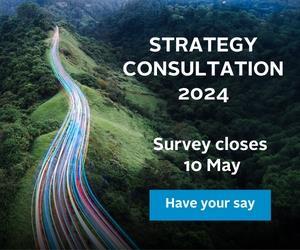This article series clarifies key concepts of responsible investment in private infrastructure equity and debt, and how the six Principles for Responsible Investment apply to infrastructure.
It focuses primarily on Principles One and Two.
What is responsible investment in infrastructure?
The Principles for Responsible Investment (PRI) defines responsible investment as “an approach to investing that aims to incorporate environmental, social and governance (ESG) factors into investment decisions, to better manage risk and generate sustainable, long-term returns”.
Responsible investment is particularly compatible with infrastructure investing because of the long-term nature of this asset class and its focus on essential services. Responsible investment is about systematically identifying, assessing, pricing, managing and monitoring material ESG risks. It means preserving and enhancing the value of an asset in the investment process – from origination to deal making, asset management and exit. Addressing material ESG considerations and practising active asset management should contribute to an improvement in the long-term riskadjusted returns for investors.
| Indirect investments | Direct investments |
|---|---|
| 82% of the PRI’s indirect infrastructure investor signatories that manage US$150 billion in infrastructure assets consider ESG to some extent in their manager selection, appointment and monitoring | 87% of the PRI’s direct infrastructure investor signatories that manage US$505 billion in infrastructure assets consider ESG to some extent in their investment decisions |
…and why practise it?
Managing material risks
Infrastructure investors should take into account a broad range of material ESG issues that these investments might face over the assets’ lifetime. These considerations could include economic developments, demographic shifts, climate change impacts, relationships with local communities (incorporating users of infrastructure and other stakeholders, and legislative and policy changes. Negative externalities, such as environmental degradation and health and safety incidents, can also outweigh the positive impacts of the investment. ESG concerns may also affect timelines, licence to operate and commercial viability.
Examples include climate group warnings about the Adani Central Queensland railway project and the dispute surrounding the Dakota Access Pipeline.
Materiality will vary according to factors including size and type of asset, region, operational environment and stage of project cycle. The impact of an asset on the natural environment and local community tends to be significant during the development and construction of greenfield projects. Stakeholder management from an early stage can be key to obtaining and maintaining the legal and social licence to operate (p.6 includes the example of Sapphire Wind Farm’s community engagement programme). The resilience of the asset to future ESG risks can also be influenced during the development phase. By taking into consideration preparedness to environmental and social risks and updates to construction standards, design and contractor requirements can facilitate future risk management.
ESG considerations in infrastructure investing
- maintaining social licence to operate
- health and safety standards (pre- and postcommercial operation date)
- biodiversity impacts
- alignment of interest with shareholders
- stakeholder management and community relations
- labour standards
- land rights, indigenous rights
- accessibility and social inclusion
- service reliability
- climate change impact and additionality
- resource scarcity and degradation
- extreme weather events
- supply chain sustainability
- accountability
- board independence and conflicts of interest
- management and board oversight of ESG
- bribery and corruption
- tax policy
- cyber security
- diversity and anti-discrimination
Brownfield infrastructure ESG risks relate both to the ongoing operation, reconstruction, renovation or expansion of an existing asset, and to long-term trends which may materialise slowly and for which the business needs to prepare. Extreme weather, environmental trends, gradual resource degradation, poor governance, deteriorating community relations and potential loss of the social licence to operate are all examples of ESG risks to an operational asset. These risks require management strategies to safeguard both assets and returns to investors.
Delivering value
Along with risk management, ESG can also help investors identify and take advantage of opportunities for value preservation and creation through the influence they exert. ESG can help to identify resource efficiencies, reduce the company’s environmental footprint, drive innovation, improve community relations, protect the social licence to operate and support staff retention. The case study on storm water treatment in the Port of Brisbane (p.6) shows how anticipating environmental risk can benefit both company and environment.
Positive impact - contributing to a more sustainable world
Infrastructure is widely considered to have a positive social impact. Infrastructure forms the backbone of every economy, enabling economic and social development. Increased infrastructure spending is widely considered to generate an economic multiplier effect. Any infrastructure asset, whether under construction or fully operational, generates social, environmental and economic impacts, such as contributing to greenhouse gas emissions reduction, revitalising disenfranchised areas, improving access to services and creating employment. Infrastructure underpins many of the 17 UN Sustainable Development Goals (SDGs), and thus infrastructure investors are well positioned to make a positive impact on the societies and economies in which they invest.
The PRI’s The SDG investment case describes the SDGs as a model for economic growth that does not compromise our environment or place unfair burdens on societies. The SDGs encourage both governments and private investors to invest more into infrastructure and hence present a significant opportunity for investors. The annual investment required to meet the SDGs is estimated at US$5trn-US$7trn from 2015 to 2030.
To meet this challenge, responsible infrastructure investment will need to consider not only how ESG risks and opportunities influence the risk-return profile of an investment portfolio but also how a responsible investment portfolio affects broader societal objectives. The SDGs can help by drawing attention to the risks associated with unsustainable practices and by providing a common framework for referencing contributions to a more sustainable world.
In summary
This approach integrates ESG factors into value preservation and creation, not only for investors but all stakeholders. This is not a matter of merely complying with the rules and regulations governing an infrastructure business. Infrastructure provides essential services and hence benefits society. However, the active management of ESG considerations is essential to achieve this sustainably and to minimise negative externalities.
Downloads
Primer on responsible investment in infrastructure
PDF, Size 0.69 mbインフラストラクチャーにおけるESG 投資入門 (Japanese)
PDF, Size 3.37 mbРуководство для начинающих по ответственному инвестированию в инфраструктуру (Russian)
PDF, Size 0.82 mb
Topics
Primer on responsible investment in infrastructure
- 1
 Currently reading
Currently readingIntroduction
- 2
- 3
- 4
- 5
- 6
- 7
- 8
- 9
- 10
- 11
























